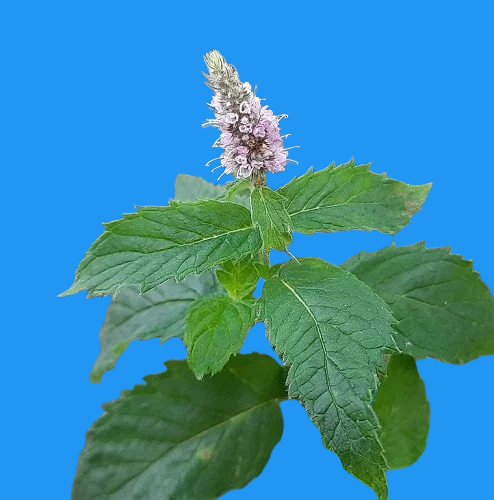Mentha Longifolia (Himalayan Wild Mint)
Mentha longifolia, commonly known as Himalayan wild mint, is a fragrant medicinal plant found abundantly in the high-altitude regions of Gilgit-Baltistan, including Hunza, Ghizer, Skardu, and Ishkoman. This perennial herb, belonging to the Lamiaceae family, is renowned for its strong aroma, therapeutic properties, and culinary uses.

In this detailed guide, we will explore:
- The botanical characteristics of Mentha longifolia
- Where it grows in Gilgit-Baltistan
- Traditional and modern medicinal uses
- Culinary applications
- How to cultivate and preserve Mentha longifolia
Botanical Description of Mentha Longifolia
Mentha longifolia is a hardy, fast-growing herb that thrives in moist, temperate climates. Key features include:
- Height: 40–100 cm tall
- Leaves: Long, lance-shaped, and serrated with a fuzzy texture
- Flowers: Small, lilac or white, clustered in dense spikes
- Aroma: Strong, refreshing minty scent due to high menthol content
Unlike common mint (Mentha spicata), Mentha longifolia has a more robust flavor and is often found growing wild near streams and riverbanks in the Himalayan mountains.
Habitat: Where Mentha Longifolia Grows in Gilgit-Baltistan
Mentha longifolia flourishes in the cool, moist valleys of Gilgit-Baltistan, particularly in:
- Hunza Valley – Alongside rivers and terraced fields
- Ghizer District – Near freshwater springs
- Skardu – In high-altitude meadows
- Ishkoman Valley – Wild growth in damp, shaded areas
This resilient plant can survive harsh mountain climates, making it a staple in traditional Balti and Wakhi medicine.
Traditional Medicinal Uses of Mentha Longifolia
For centuries, Mentha longifolia has been used in Gilgit-Baltistan’s herbal remedies for:

1. Digestive Health
- Relieves indigestion, bloating, and nausea
- Used as a natural remedy for stomach cramps and diarrhea
- Consumed as mint tea to stimulate digestion
2. Respiratory Relief
- Acts as a natural decongestant for colds and coughs
- Inhaling Mentha longifolia steam helps with sinus congestion
- Chewing fresh leaves soothes sore throats
3. Pain and Inflammation
- Crushed leaves applied to headaches and muscle pain
- Essential oils used in aromatherapy for relaxation
4. Antimicrobial Properties
- Effective against bacterial and fungal infections
- Used in traditional wound cleaning
Culinary Uses of Mentha Longifolia in Gilgit-Baltistan
Beyond medicine, Mentha longifolia is a key ingredient in Balti cuisine:
- Mint Chutney (Podina Chatni) – Made with yogurt, cilantro, and spices
- Herbal Teas (Qahwa) – Boiled with green tea for a refreshing drink
- Seasoning for Meat Dishes – Enhances flavor in Hunza curries
- Fresh Salads – Adds a zesty kick to local greens
How to Cultivate and Preserve Mentha Longifolia
Growing Mentha Longifolia at Home
- Soil: Well-drained, slightly acidic
- Watering: Keep soil moist but not waterlogged
- Sunlight: Partial shade to full sun
- Propagation: Easily grown from cuttings or seeds
Preservation Methods
- Drying: Hang bunches upside-down in a shaded area
- Freezing: Chop leaves and store in ice cubes
- Essential Oil Extraction: Steam distillation for concentrated benefits
Why Mentha Longifolia is a Himalayan Treasure
Mentha longifolia is more than just a wild herb—it’s a vital part of Gilgit-Baltistan’s ecosystem, cuisine, and traditional medicine. Whether you’re trekking through Hunza, Ghizer, or Skardu, you’ll likely encounter this fragrant plant, cherished for its healing and culinary properties.
By incorporating Mentha longifolia into your diet or herbal remedies, you can experience the natural benefits of this Himalayan wild mint.
Did You Know?
- Mentha longifolia is also called “Jungli Podina” in local dialects.
- It attracts pollinators like bees and butterflies, supporting biodiversity.
Have you tried Mentha longifolia? Share your experiences in the comments!



